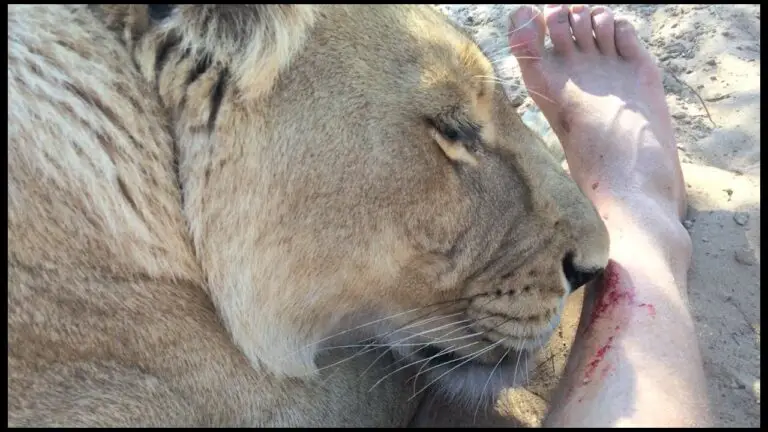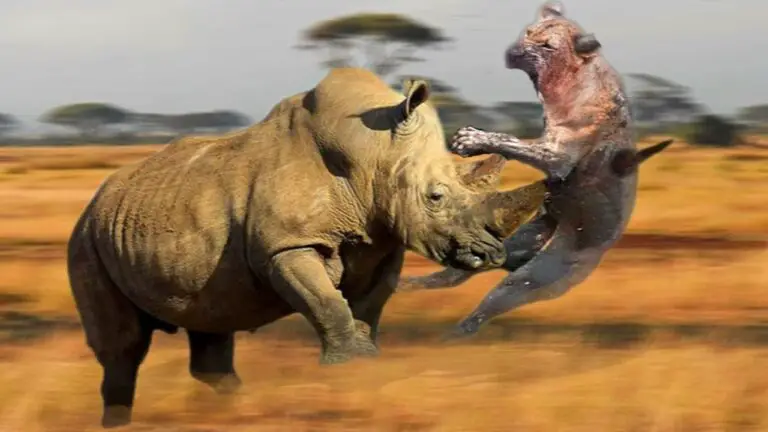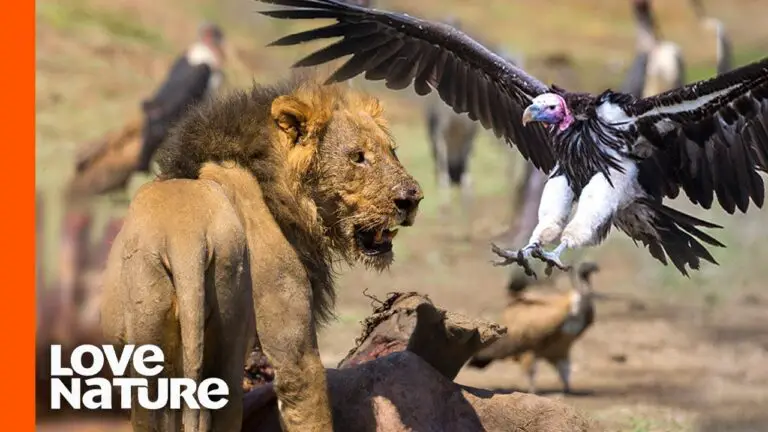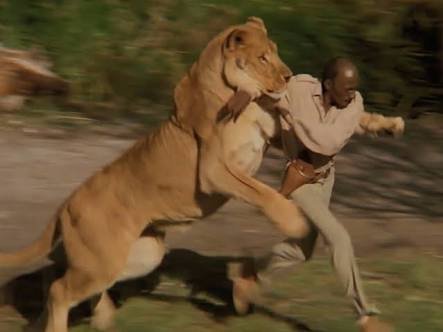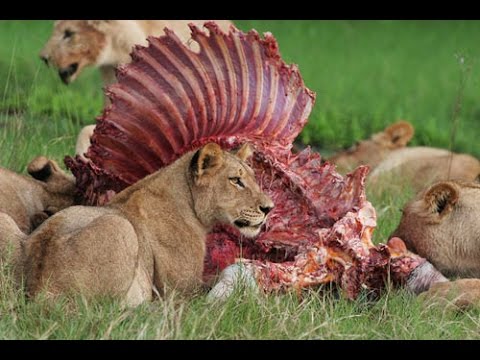How Do Lions Communicate With Each Other
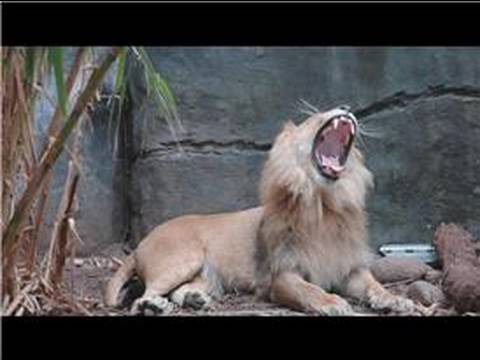
Lions communicate with each other through sounds like roars, grunts, moans, growls, snarls, purrs, hums, puffs, and woofs, as well as through body language. Each sound and gesture has a different meaning, allowing lions to convey messages and establish social bonds within their pride.
Lions also rely on sight and scent to distinguish members of their own pride from outsiders, helping them maintain social ties and prevent conflicts. Additionally, lions use tactile actions such as nuzzling and head rubbing to show affection and reinforce social bonds.
Through these various forms of communication, lions are able to navigate their social dynamics and contribute to the survival and cohesion of their pride.
Lions’ Vocal Communications
Roars and Growls: Lions communicate through powerful roars and menacing growls, which can be heard from miles away. These vocalizations are used to establish dominance, defend their territory, and communicate with other pride members.
Moans and Snarls: Lions use moans and snarls to express aggression or frustration. These deep, guttural sounds are often accompanied by threatening body language, such as bared teeth and bristling fur.
Purrs and Hums: Contrary to popular belief, lions can purr, just like domestic cats. However, lion purrs are much deeper and tend to resemble low-frequency hums. These soothing sounds are used to communicate contentment and comfort.
Woofs and Puffs: Lions also use woofs and puffs as forms of communication. Woofs are short, sharp barks, often used during play or to get the attention of other pride members. Puffs are gentle exhalations, similar to blowing air, used to show affection or greet one another.
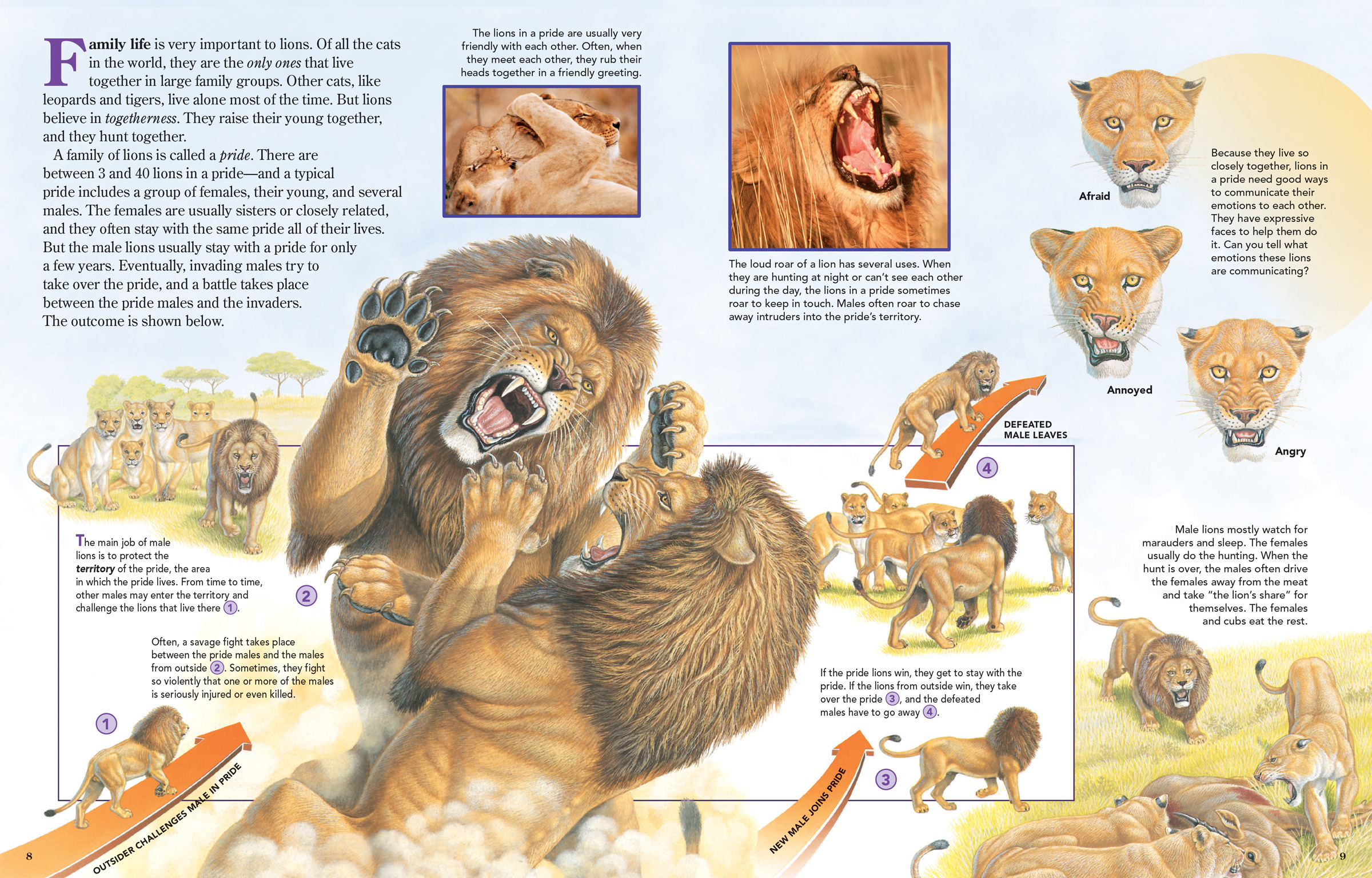
Credit: rangerrick.org
Other Forms Of Communication
Lions have a variety of ways to communicate with each other. One of the most common forms of communication is through body language. They use gestures such as tail flicks, ear movements, and head postures to convey different messages to other lions. For example, a lion might lower its head and flatten its ears to show submission, while raising its tail can indicate aggression.
Another form of communication is through scent marking. Lions use their urine and feces to mark their territory, leaving behind chemical signals that can communicate information about their presence and status to other lions. This helps establish boundaries and prevent conflicts between different pride members.
Lions also use eye contact to communicate. Staring or looking directly into another lion’s eyes can convey dominance or aggression, while avoiding eye contact may signal submission. Eye contact is an important part of establishing and maintaining social hierarchies within a pride.
Social Bonds And Interaction Among Lions
Lions communicate through various forms of social interaction. One way lions establish social bonds is through head rubbing and licking. This behavior reinforces connections between individuals, especially among females. Lions use a combination of sounds and body language to convey messages to one another. Sounds like roars, grunts, moans, growls, snarls, purrs, hums, puffs, and woofs all have different meanings in the lion’s communication system. Lions can distinguish members of their own pride from outsiders using sight, scent, and sound. Lionesses, in particular, are able to retain social ties and prevent conflict by recognizing physical traits, scent, and voice of their pride members. Lions’ vocalization includes growls, moans, groans, huffs, and puffing sounds that resemble purring.

Credit: lionalert.org
Distinguishing Between Lions
When it comes to lions communicating with each other, they use various methods to distinguish between themselves. Sight plays a crucial role, as lionesses are able to identify physical traits of lions within their own pride and differentiate them from lions in other prides. They can recognize familiar individuals based on their appearances. In addition to sight, scent is another important means of communication. Lions use scent marking to establish and defend their territory. Each lion has a unique scent that helps them identify their pride members. The voice of a lion also serves as a communication tool. Lions communicate through various vocalizations such as roars, grunts, moans, and growls. These sounds convey different messages and meanings, allowing lions to communicate effectively within their social structure. Overall, lions utilize sight, scent, and voice to maintain social ties, prevent conflict, and establish their identity within the pride.

Credit: animals.sandiegozoo.org
Frequently Asked Questions On How Do Lions Communicate With Each Other
How Do The Lions Communicate?
Lions communicate through sounds like roars, grunts, moans, growls, and purrs, as well as body language. Each sound and gesture has a different meaning. They can also distinguish other lions from their own pride through sight, scent, and voice. Lions reinforce social bonds by licking each other and rubbing heads together.
How Do Lions Tell Each Other Apart?
Lions communicate through sounds like roars, grunts, and purrs, as well as body language. Each sound and gesture has a different meaning, allowing them to distinguish their own pride members from outsiders. They rely on sight, scent, and sound to tell each other apart.
How Do Lions Connect?
Lions communicate through various sounds like roars, grunts, moans, growls, and body language. They reinforce social bonds by licking each other and rubbing heads. Lions can distinguish members of their own pride from outsiders through sight, scent, and voice. Each sound and gesture has a different meaning in their communication.
How Do Lions Vocalize?
Lions communicate through various vocalizations like roars, grunts, moans, and purrs, as well as body language. Each sound and gesture has a different meaning. Lions can distinguish members of their own pride based on sight, scent, and sound. They also show affection through nuzzling and head rubbing.
Conclusion
Lions communicate through various sounds and gestures such as roars, grunts, moans, growls, snarls, purrs, hums, puffs, and woofs, as well as body language. Each sound and gesture carries a different meaning, allowing lions to effectively convey their intentions and emotions.
Through their distinctive vocalizations and physical interactions like head rubbing and licking, lions maintain social bonds and establish their place within the pride. Understanding how lions communicate helps us appreciate the complexity of their social structure and the importance of these communication methods in their daily lives.
